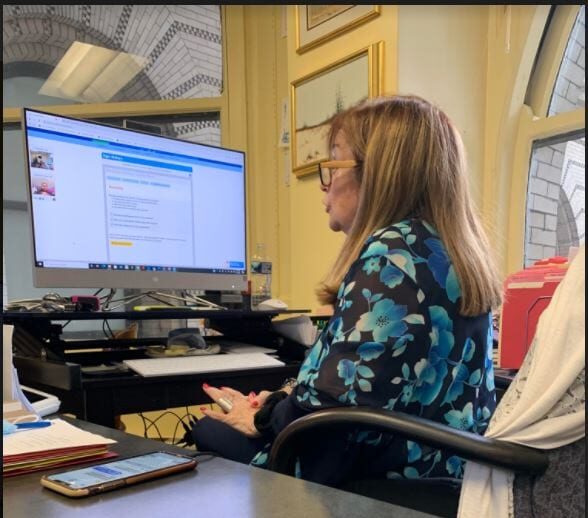- Best New York City Notary Service
- 646-309-6466
- Mon - Fri: 9:00 - 18:30

Basics of Remote Notarization
Think about it. Now you can be in the privacy of your home or office and obtain a notarized document(s).
Historically, the law mandated all notaries, no matter how they performed their services, needed to watch as someone signed a document. This required that the notary and signer must travel to meet one another in person where the notary acts as a witness during the signing event.
Then, in 2011, the state of Virginia introduced something called REMOTE NOTARIZATION. Currently, there are 26 states that have enacted some form of remote online notarization. Things are moving quickly and we will attempt to post changes as we receive them.
One might ask, how can a person be identified if the notary is in a different place?
The answer is that Remote Notaries have digital tools to assist them. For example, remote notarizations require that a customer answer identity challenge questions, typically called Knowledge Based Authentication, before they may sign a document. This ensures that the customer is who they claim to be. Also, because it is conducted online, a remote notarization can be recorded – allowing anyone to verify the transaction after the fact.
The name “remote notary” is derived from the fact that the notary serves a non-local customer directly over the internet. A remote notary is a legally commissioned notary public who is authorized to conduct notarizations over the internet via digital tools and a live audio/ video camera.
Below are a few examples of how technology is able to assist remote notaries:
KNOWLEDGE BASED AUTHENTICATION
Knowledge Based Authentication is an identity authentication method that asks questions based on detailed information an individual knows. This information is usually more advanced than the kind of information a fraudster might be able to access through your email or computer. Knowledge Based Authentication is often used along with another type of authentication (such as a password) to increase security. There are two kinds of Knowledge Based Authentication — static and dynamic.
STATIC KNOWLEDGE BASED AUTHENTICATION
If you have ever needed to reset a password, you’ve probably encountered static knowledge-based authentication. With this method, you pick security questions and give answers that are stored and referenced later. The user controls the questions and answers with this type of knowledge- based authentication. Static KBA, also referred to as “shared secrets” or “shared secret questions”, is commonly used by banks, financial services companies, and e-mail providers to prove the identity of the customer before allowing account access, or as a fall back if the user forgets their password. At the point of initial contact with a customer, a business using static KBA must collect the information to be shared between the provider and customer, most commonly the question(s) and corresponding answer(s). This data must then be stored, only to be retrieved when the customer comes back to access the account.
DYNAMIC KNOWLEDGE BASED AUTHENTICATION
Dynamic Knowledge Based Authentication takes authentication to the next level by generating questions that only apply to one specific person. This type of Knowledge Based Authentication does not require any previous relationship with the customer, so it is an attractive option for e-signature users that need to be authenticated instantly. We sometimes call these questions “out-of-wallet” questions because the information couldn’t be found in a person’s wallet if it was stolen. The questions are generated from the user’s credit history or public records.